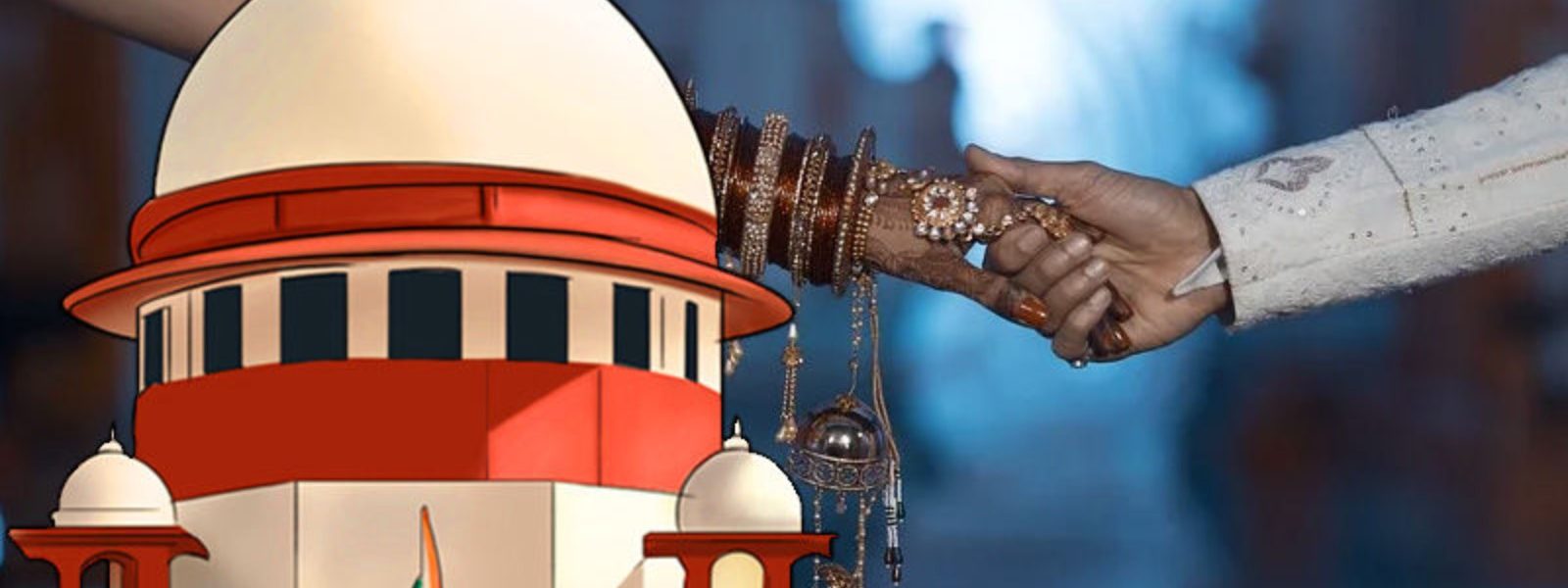Summary: The Article argues that mandatory requirements to publish a notice of any marriage under the Special Marriages Act, constitutes indirect discrimination against interfaith couples.
In the hearings on the marriage equality petition, the Supreme Court [“SC”] observed the disproportionate impact of the Special Marriage Act [“SMA”] on marginalised communities. In particular, Sections 5, 6 and 7’s notice requirements form one of the most contentious provisions of the SMA. Under Section 5, a couple seeking to solemnise their marriage under the Act must issue a public notice to that effect, thirty days prior to the solemnisation. Some states make such details available on public websites, along with the couple’s contact details and addresses. Section 6 mandates that the notice must be published in a “conspicuous place”, while Section 7 empowers any individual to raise an objection to the marriage.
In Safiya Sultana v. State of Uttar Pradesh the Allahabad High Court held that these notice requirements were not mandatory, but merely directory as per the will of the parties. It based its enquiry under the right to privacy framework given by the Puttaswamy judgement. While literature surrounding the provisions has also centred around a such a privacy challenge, I argue that the sections facilitate violence against a vulnerable group (inter-faith couples) and constitute an indirect discrimination. Introducing such a right to equality argument based on indirect discrimination is a novel approach that builds on the developments in equality jurisprudence in India.
The Test of Indirect Discrimination
The acceptance of indirect discrimination is a monumental development in our understanding of equality law. It is a shift from the layperson’s understanding of discrimination—one that primarily looks at direct prejudice—to an analysis of the unconscious and structural effects of seemingly neutral provisions on disadvantaged groups.
In Navtej Singh Johar, Chandrachud J. struck down Section 377, recognising that a “neutral” law can be deemed unconstitutional based upon the discriminatory effects it has in its application. The Delhi High Court has also previously recognised indirect discrimination in the case of Naz Foundation (which was subsequently overruled)and more recently in Madhu v. Northern Railways where the conditions of employment that were facially neutral were held as unconstitutional for its disparate impact on women.
The test was more concretely recognized and operationalised by the SC in Lt Col. Nitisha v. Union of India (“Nitisha”). The SC held that indirect discrimination was a function of not just a conscious or malicious act designed to prejudice a section of people, but “unconscious/implicit biases or an inability to recognize how existing structures/institutions, and ways of doing things, have the consequence of freezing an unjust status quo” can also have discriminatory effects, violating the right to equality. Thus, seemingly neutral laws which prejudicially impact a protected group would also constitute an indirect discrimination. Gauri Pillai notes that by looking at discrimination in such a systemic rather than merely individualistic manner, the SC imposed positive actions upon the State to address systemic discrimination.
The SC in Nitisha, analysed the discriminatory effect of the impugned provisions through a two-stage test, borrowed from the decision of Fraser v. Canada:
(1) First, the Court must evaluate whether the challenged rule disproportionately impacts a group.
(2) Second, Courts must look at whether the provision has the effect of “reinforcing, perpetuating, or exacerbating disadvantage.” Such disadvantage must be evaluated considering the systemic or historical disadvantage faced by claimants.
The next question the Court analysed is that of justification. The two questions that the SC looks at in this regard is whether a justification for such an indirect discrimination is lawful, and if the measures taken are necessary for such an end. This test has been explained in further detail in the the next section, by applying the notice requirements of SMA to the rigor of the indirect-discrimination test.
Evaluating the Sections against tenets of Indirect Discrimination
In this section, the tenets of indirect discrimination are applied on the impugned provisions of the SMA. The analysis is structured in two distinct parts. First, it analyses how the provisions disproportionately affect a protected group. By outlining the inherent vulnerabilities faced by the group, it demonstrates how the Act exacerbates such disadvantages. In the second part, it engages with the justifications that have been provided for the impugned sections, and analyses their inherent invalidity as per the decision in Nitisha.
Disproportionate Effect
The SC in Nitisha quoted Fraser to state that recognition of a protected group is based on considerations that demonstrates “that the membership in the claimant group is associated with certain characteristics that have disadvantaged members of the group“. In identifying such groups, the SC held that the judiciary must exercise “judicial common sense”. In the case of inter-faith couples, there is a case for this group to be categorised as a protected group.
They remain stigmatised in society, and live their lives under the constant threat of persecution from their families and communities, which force them to leave their homes. Khap Panchayats often issue notices prohibiting inter-faith marriages, warning the communities of sanctions against them. Family members routinely threaten such couples, file false cases of abduction, or kill their spouses, as a way of upholding the family’s ‘honour’.The Canadian Refugee ‘Board’s report on the situation of inter-religious couples in India is illustrative of the same. This illustrates how, applying judicial common-sense, as ambiguous as the term may be, the judiciary would be tilted to consider the inter-faith couples as a protected group.
While the dangers above are present even without the SMA, the SMA plays a crucial role in exacerbating the effects of that disadvantage. The notices and pictures detailing inter-faith couples are often circulated among fringe groups on WhatsApp, urging group participants to prevent the couple from marrying each other. Notice authorities frequently tip mobs that brutally beat up and torture such couples. Local fringe groups have in fact admitted that they religiously scan notices to keep an eye out for inter-faith couples. While exact statistics of such effect may not be available in the public domain, the same is not a necessity for the test under indirect discrimination. The SC has held that ‘evidence generated by the claimant group’ through testimonies may be used to establish the disparate impact. Thus, it is evident that the notice requirements under the SMA act, while seemingly neutral, have a disproportionate effect on inter-faith couples, a disadvantaged and protected group. The next section analyses how possible justifications for the same are insufficient to uphold such notice requirements.
Lack of Justifiability
At this juncture, the arguments for retaining the provisions presented by the government affidavit in Nida Rehman v. State of NCT shall be analysed to prove how they do not justify the indirect discrimination meted out.
The justification given in the affidavit was that the notice ensured the verification process is properly met. Verification may prevent a marriage in violation of bigamy laws, but a cursory look at the Special Mariage Act itself assuages this concern. For a person to conduct a valid marriage under the SMA, neither of the parties to the marriage must have a living spouse. Therefore, under the SMA, any marriage in which an individual has a living spouse would be invalid regardless of such a notice period.
Further, the need for verification is absent for religious marriages. The absence in itself indicates an unwarranted degree of state paternalism that operates against interfaith couples. It is grounded in notions of ‘religious purity’, which attach a greater consequence to interfaith marriages vis-à-vis non-interfaith marriages. Such considerations that infringe on equality cannot be justified as per law as held in Anuj Garg v. Hotel Association of India. This was cited by the decision in Nitisha, which held that while courts must defer to justifications offered by employers, they would not be acceptable if such justifications are based on generalisations and stereotypes.
In conclusion, it is fairly clear that the notice requirements do not serve a purpose that can be constitutionally justified. While the notice requirements are seemingly neutral, its effects are most definitely not. They target and endanger the lives of numerous people, by facilitating the violence that fringe groups perpetuate on inter-faith couples. A challenge to the impugned provisions under indirect discrimination may enable the SC to put an end to a large faction of such violence.
Shashank Mehrotra is a IVth year student at National Law University, Delhi.
[Ed Note: This article has been edited by Saranya Ravindran and published by Harshitha Adari from the Student Editorial Team.]








[…] Posted byShashank Mehrotra […]